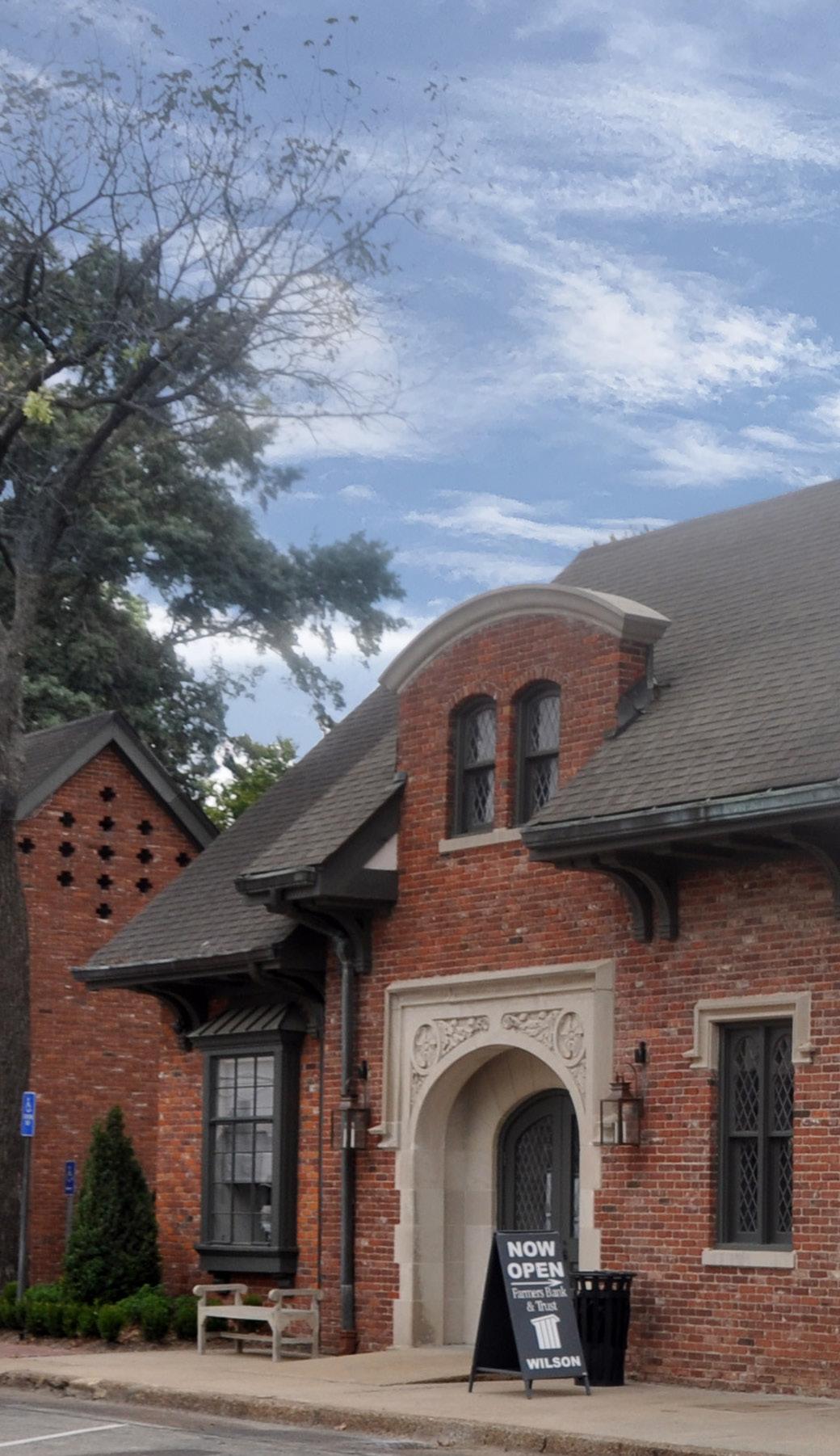Renovating a Bank, Revitalizing a
Community
With $331 billion in loans to small businesses and $175 billion in loans to farmers and ranchers, it’s no question that America’s banks help build thriving communities. Our country, and our state, is filled with examples of banks helping to build communities not only thrive, but flourish. This is the story of the northeast Arkansas town of Wilson. Nestled along Highway 61, near the banks of the Mississippi, in the heart of cotton country, sits a bustling community, thriving in a region traditionally stricken by poverty. In fact, it was named among USA Today’s “Best Southern Small Towns” of 2017. The village of Wilson began in the late 1880s, built as a home for employees of the Robert E. Lee Wilson family, who owned a logging and sawmill operation, and later a cotton operation. Compared to many “company towns” along the Delta, Wilson kept a high standard of
living, providing services and schools for residents. The town’s Tudor architecture provides an eye-catching surprise as you roll along Highway 61. And if you weren’t already welcomed by the roof of the Wilson Cotton Gin, the quaint town square and grassy park are enough to make you feel like you’re standing in the center of Mayberry brought to life. On the northeast corner of that square, sits a bank building that has stood since the early 1950s, originally housing the Bank of Wilson. Earlier this fall, Farmers Bank & Trust of Blytheville finished renovation on the building after purchasing it from Bancorp South in 2016. Keeping with the vintage theme of the town, the renovation centers around an Italian marble interior and teller cages that tie back to the old Liberty Savings Bank & Trust in Memphis.
The unique colored rust, beige, and white with streaks of lavender came from an Italian quarry that was exhausted in the early 1920s. These fixtures stood in the Liberty Savings Bank & Trust until the World War II era, when the bank was set to be torn down. At that time, the Bank of Wilson purchased the building
Farmers Bank President & CEO Randy Scott with the staff of the Wilson branch, Pam Senter, Sybil Gunn, and Jessica Nash. While the bank has been newly renovated, the Italian marble and vintage teller cages date back to 1908.
16
The Arkansas Banker | November 2017






